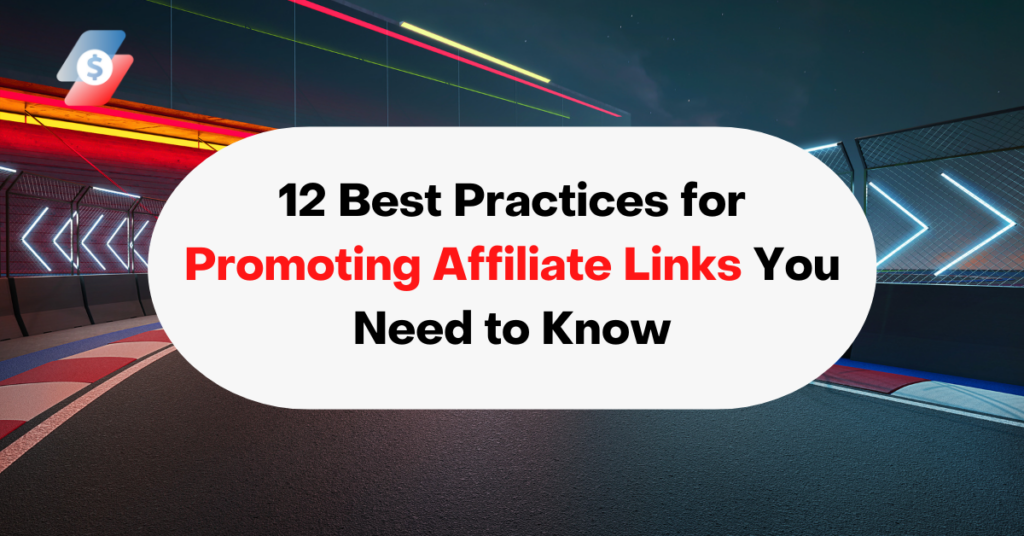Affiliate marketing is a dynamic and ever-evolving field that offers a wealth of opportunities for earning passive income by promoting products and services online. However, the true key to success lies not just in joining affiliate programs, but in mastering the art of promoting affiliate links effectively.
This comprehensive guide delves into 12 of the best practices for promoting affiliate links, exploring strategies ranging from high-quality content creation and SEO optimization to leveraging social proof and maintaining ethical transparency. Whether you’re a seasoned marketer or a beginner looking to make your mark, these insights will help you maximize your affiliate marketing efforts and achieve sustainable growth.
1. Create High-Quality Content
a. In-Depth Product Reviews: Write comprehensive reviews that cover the pros, cons, features, and benefits of the product. Include personal anecdotes or case studies to make your reviews more relatable and trustworthy.
b. Comparison Articles: Create comparison articles that compare the product you are promoting with similar products. Highlight the unique selling points and why you recommend a particular product over others.
c. Evergreen Content: Focus on creating evergreen content that remains relevant over time. This ensures that your content continues to attract traffic and generate commissions long after it’s published.
2. Use Multiple Content Formats
a. Podcasts: Launch a podcast where you discuss topics related to your niche and subtly mention affiliate products. Podcasts can help build a loyal audience who trust your recommendations.
b. Webinars and Live Streams: Host webinars or live streams to engage with your audience in real-time. Use these sessions to demonstrate products, answer questions, and provide exclusive discounts through your affiliate links.
c. Infographics: Design informative infographics that visually represent the benefits and features of the product. Infographics are highly shareable and can attract a lot of traffic.
3. Optimize for SEO
a. Backlink Building: Engage in backlink building strategies to improve your site’s authority and search engine ranking. Guest posting, collaborations, and creating shareable content can help acquire quality backlinks.
b. Local SEO: If applicable, optimize your content for local SEO to attract a geographically targeted audience. Use location-specific keywords and create content relevant to local interests.
4. Email Marketing
a. Drip Campaigns: Set up drip email campaigns that nurture your leads over time. Gradually introduce them to your affiliate products through a series of emails that build interest and trust.
b. Exclusive Offers: Provide your email subscribers with exclusive discounts or special offers that they can only get through your affiliate links.
5. Leverage Social Proof
a. User-Generated Content: Encourage your audience to create and share content featuring the products you promote. This can include testimonials, reviews, and photos on social media.
b. Influencer Collaborations: Partner with influencers in your niche to promote affiliate products. Influencers can provide powerful social proof and expand your reach.
6. Use Call-to-Actions (CTAs)
a. Contextual CTAs: Place CTAs within the context of your content. For example, in a blog post, you can include a CTA after discussing a specific benefit of the product.
b. Exit-Intent Popups: Use exit-intent popups to capture visitors who are about to leave your site. Offer them a special deal or incentive to click on your affiliate link before they go.
7. Disclose Affiliate Relationships
a. Multiple Disclosure Points: Include your disclosure at multiple points within your content, such as at the beginning of a blog post, in the middle, and at the end, to ensure visibility.
b. Positive Framing: Frame your disclosures positively by explaining that using your affiliate links helps you continue to provide valuable content.
8. Analyze and Optimize
a. Heatmaps and User Behavior: Use heatmaps and user behavior analytics to understand how visitors interact with your content. Identify which areas are getting the most engagement and strategically place your affiliate links there.
b. Conversion Rate Optimization: Continuously test different elements on your page, such as headlines, images, and CTAs, to improve your conversion rates. Even small tweaks can lead to significant improvements.
9. Diversify Your Promotions
a. Paid Advertising: Consider using paid advertising platforms like Google Ads, Facebook Ads, or Instagram Ads to promote your affiliate products. Use targeted ads to reach specific demographics interested in your niche.
b. Affiliate Link Shorteners: Use link shorteners like Bitly to make your affiliate links more manageable and trackable. Custom short links can also improve click-through rates.
10. Build Relationships
a. Engage in Forums and Communities: Participate in online forums and communities related to your niche. Provide valuable insights and subtly incorporate your affiliate links where relevant.
b. Host Contests and Giveaways: Organize contests or giveaways that require participants to engage with your affiliate products. This can generate buzz and drive traffic to your links.
11. Stay Updated with Industry Trends
a. Follow Industry Blogs and News: Stay informed about the latest trends, tools, and strategies in affiliate marketing by following industry blogs, news sites, and influencers.
b. Continuous Learning: Invest in courses, attend webinars, and participate in affiliate marketing conferences to continually enhance your knowledge and skills.
12. Create a Resource Page
a. Recommended Tools and Products: Create a dedicated resource page on your website where you list and link to all the tools and products you recommend. This makes it easy for your audience to find and purchase them.
b. Affiliate Disclosures: Clearly disclose your affiliate relationships on your resource page to maintain transparency and trust with your audience.
Promoting affiliate links effectively involves a multifaceted approach that blends content creation, SEO, email marketing, social proof, and ethical practices. But the key to success in affiliate marketing is to provide genuine value to your audience while strategically placing your affiliate links to ensure they are helpful and relevant.

